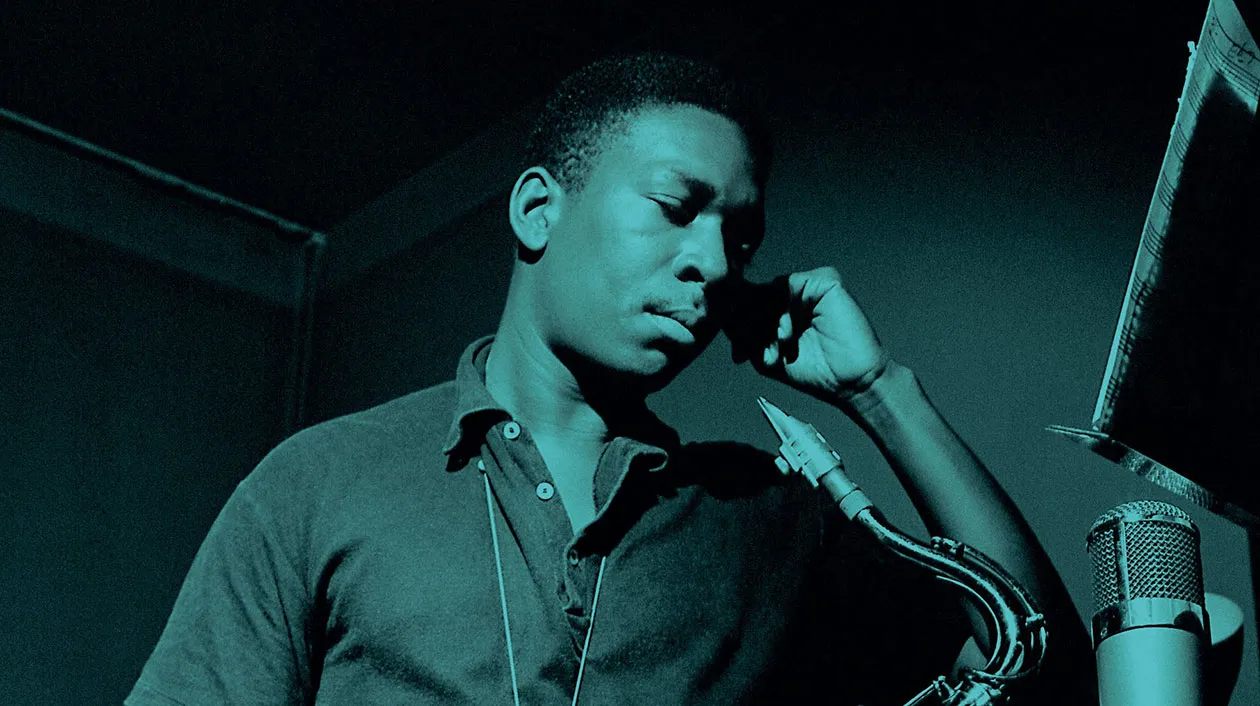Blue Train was John Coltrane’s only recording for Blue Note. It was the first album where he chose the musicians he wanted to record with, and it is the album in which he gets closest to hard bop, which is a category that I don’t really understand. There are sub-categories in Jazz, and if you asked me to listen and then tell you which category an album falls into, I wouldn’t really know.

It has been said that “Blue Train” is uncharacteristic of Coltrane’s music and that it makes too many concessions to the Blue Note ‘sound’. Again, I really wouldn’t know, I just like it. I can certainly see the difference between this and the magnificent ‘Giant Steps’, but I can also see the difference between ‘Hard Days Night’ and ‘Let it Be’, and if there were no real difference then that would be a disappointment.
At the time of recording, Coltrane had recently beaten his addiction to heroin that had been ongoing since 1953 and which had been overlaid on an earlier acquired addiction to alcohol and cigarettes. Much of the music on ‘Blue Train’ seems quite upbeat and, to me at least, has a sense of joy to it, a sense of release.
John Coltrane: The Man Behind the Music
- Spiritual Awakening Inspired His Music
Coltrane had a deep spiritual transformation in 1957 (the same year Blue Train was recorded), which profoundly impacted his later work. He saw music as a force for healing and enlightenment. - Part of the Legendary Miles Davis Quintet
Before recording Blue Train, Coltrane played with Miles Davis in his first classic quintet, which helped him gain recognition and refine his improvisational skills. - Pioneer of “Sheets of Sound”
Coltrane developed a unique style critics called “sheets of sound”—a rapid-fire barrage of notes and complex harmonics that pushed the limits of bebop. - Practiced Obsessively
Coltrane was known for his relentless practice routine—he would reportedly practice up to 17 hours a day, even falling asleep with his saxophone in his hands. - Influenced by Indian and African Music
Later in his career, Coltrane studied non-Western music, especially Indian ragas, which influenced his modal explorations and albums like A Love Supreme.
Blue Train (1957): A Hard Bop Masterpiece
- Only Album for Blue Note Records
Blue Train was the only album Coltrane recorded as a leader for Blue Note Records—jazz’s most iconic label. It gave him full artistic control over the session. - All-Star Lineup
The band featured jazz legends: Lee Morgan (trumpet), Curtis Fuller (trombone), Kenny Drew (piano), Paul Chambers (bass), and Philly Joe Jones (drums). A dream team of hard bop. - Mostly Original Compositions
Four of the five tracks on the album were composed by Coltrane himself, showing his emerging voice as a composer. - Title Track is a Jazz Standard
The tune “Blue Train” became a jazz standard and is frequently studied and played by musicians for its strong blues form and rich harmonic structure. - Mix of Blues and Hard Bop
The album blends the driving rhythms and gospel influence of hard bop with blues-based structures, making it accessible yet deeply sophisticated.


Leave a Reply